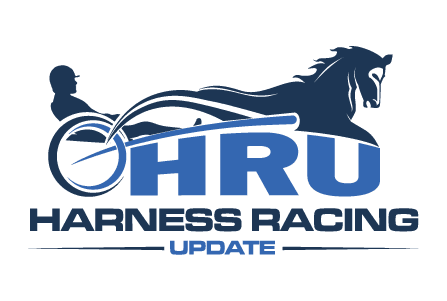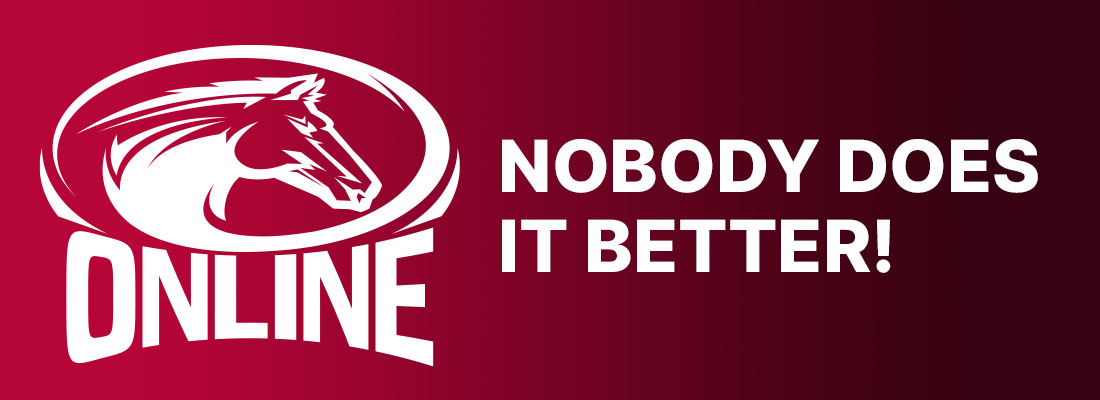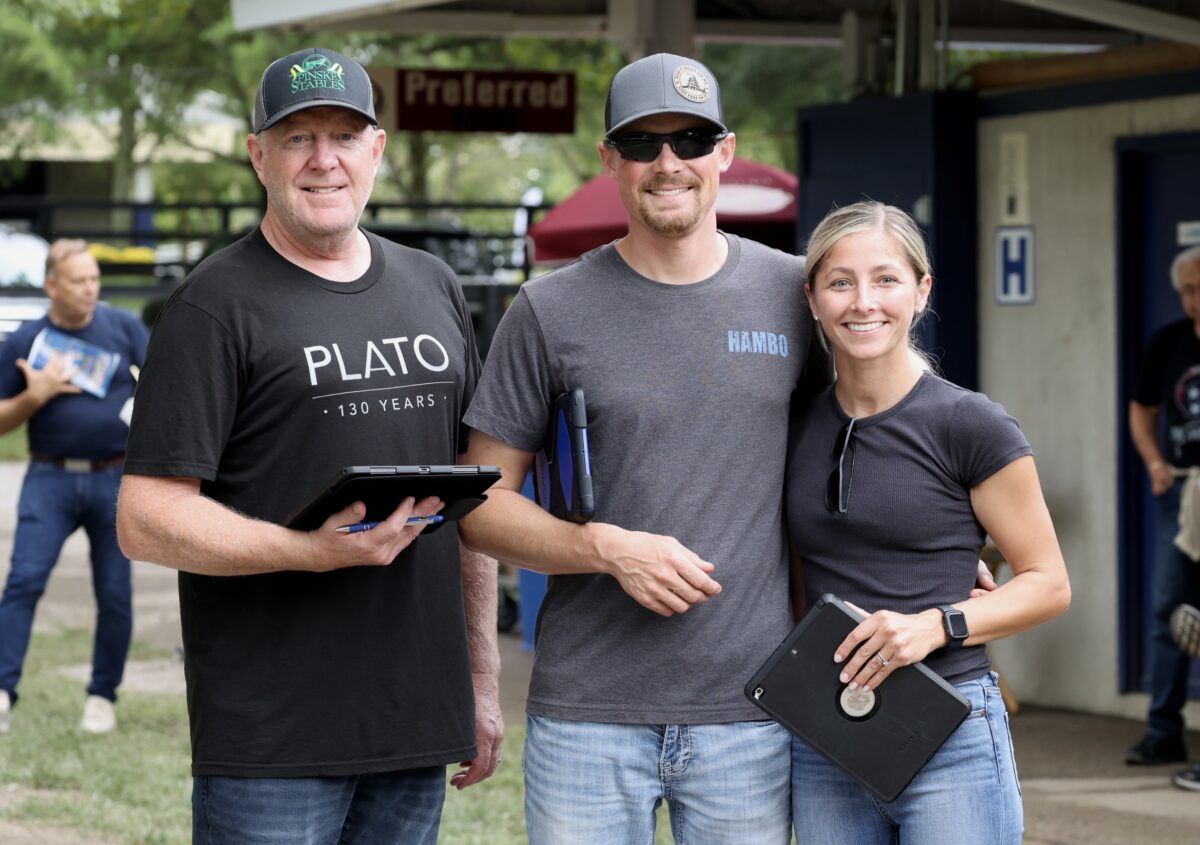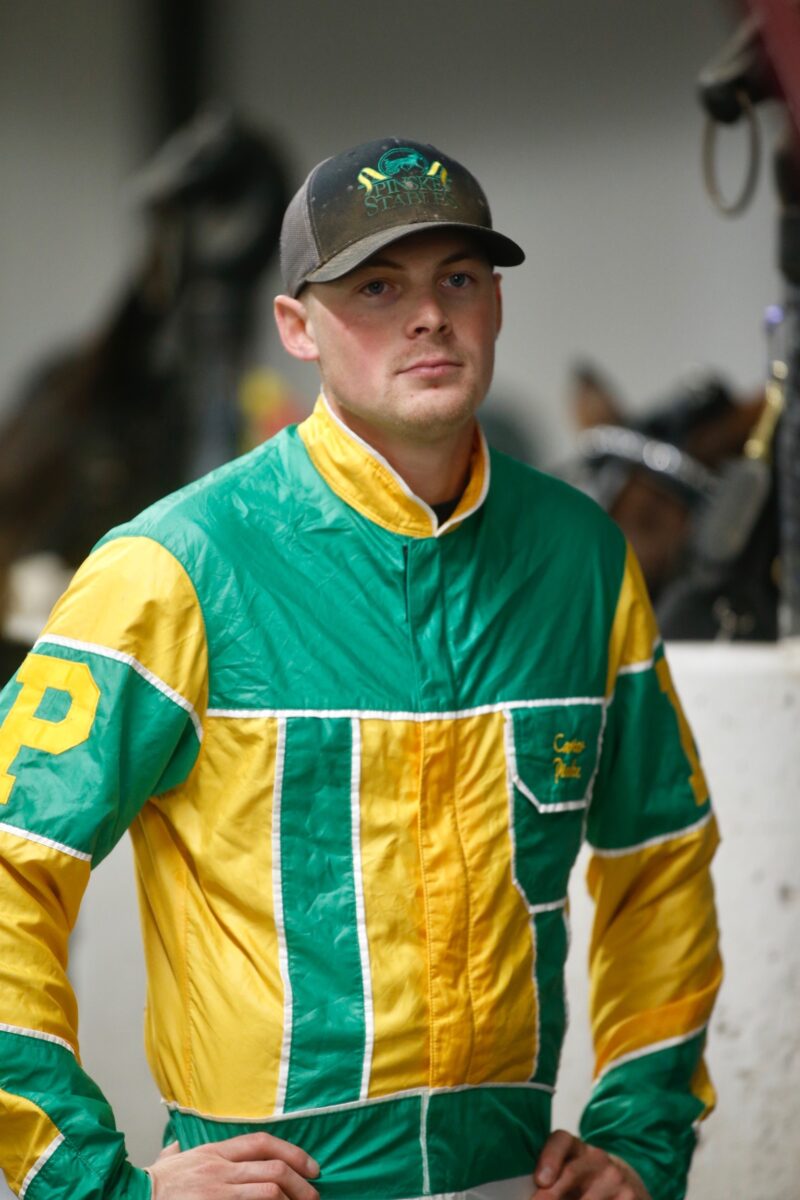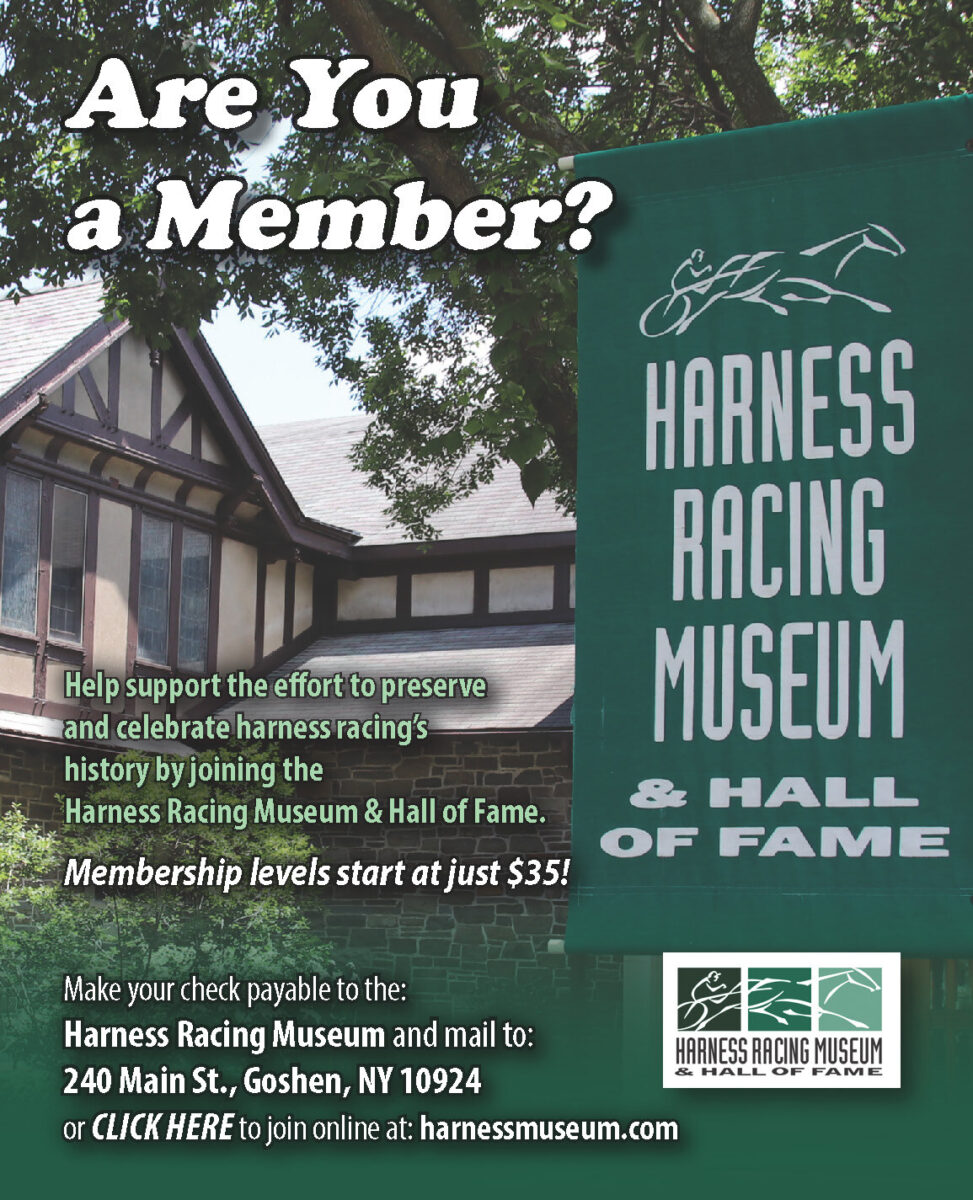At 29, Carter Pinske is still obsessed with harness racing
by Murray Brown
At the relatively young age of 29, Carter Pinske has found himself with as full a plate as anybody in the business regardless of their age or experience.
In addition to his familial duties as a husband to Makenna and the father of two young sons, he is in charge of the Southern Oaks Training Center in Sorrento, FL, the fairly recently acquired — and built Generations Farm in Versailles, KY — and a good-sized group of trainees which now numbers 40 in Kentucky, but consisted of 50 head while he was in Florida.
How are you able to manage that many responsibilities?
“I suppose more than anything, with that many things to do, it keeps me out of trouble. I couldn’t do it all without good help, lots of not only good, but great help. At Southern Oaks, Grandma Marlys is an essential component. She has been an integral part of the operation ever since she and my grandfather Tim bought it from Jim Simpson.
“My dad Karl presents a huge help in running the business aspects of both the training centers and in an area where he is sometimes overlooked — visiting the farms, inspecting the yearlings, and in being a guiding force at the sales when we are bidding on and buying the pupils that we will be training.
“I like to believe that our help at the stable, taking care of the horses, is second to none. At Southern Oaks, we have a great core of people who have been with us from the time Tim and Marlys first acquired what was then called the Simpson Training Center.”
My association with the Pinske’s of Plato, MN, began with your uncle Brian and through Brian with your grandfather Tim and his father who I knew as Grandpa Bob. Let’s start at the beginning. How did Grandpa Bob become involved with harness horses?
“It started with my great grandfather, Bob, and his uncles, Bill and Clem. They traded work horses which they had used in the building business for budding harness horses. The three started racing them in the fairs in Minnesota as a hobby. Occasionally, they’d get some who were too good for the Minnesota fairs and they branched out. My grandparents, Tim and Marlys, would eventually race in Winnipeg and Lexington after high school graduation but returned home to raise their kids and help run the family business with his father. Bob would race summers in Minnesota and falls at the Meadows in PA, and would teach his trade to my uncle Brian who was in college at that time. At that time the “hobby” became a business as Brian went into harness racing whole hog, first in Illinois, running the stable, and becoming its full-time trainer and driver. Grandpa Tim was his farrier to start and a good one at that; a duty he continued at when running the stable himself.
“Brian and his then Grand Circuit stable had risen to a degree where it had become one of the bigger and more successful stables in North America. Then came his loss. It was horrible and totally unexpected, not only to his family, but also to just about everyone who had made his acquaintance. Of course, we all mourned, but we all realized that life had to go on. My grandfather and grandmother lifted themselves off the ground and persevered. Grandpa training and grandma running Southern Oaks. As luck would have it, we won the North America Cup that very year. I grew up in the family cabinetry business with my dad, and we raised, broke and trained horses at our farm in Minnesota.”
When did you know that your life’s work was going to be in harness racing?
“Probably from the first instance when I had the ability to think and make decisions. I’ve been obsessed with a love of horses for as long as I can remember. I cannot remember a time or instance when I felt that I might do anything else. I’ve been fortunate enough to have had four great teachers in my life — three from within my family and the fourth outside of it. I grew up learning from my uncle Brian and my grandfather Tim. In addition to both of them having been excellent horsemen, both were also exceptional human beings. They were great teachers who had a great deal of patience for a sometimes snot nosed kid who may have not known as much as he might have believed he did.
“Brian and I had a great affinity for each other. He loved having me around the stable and I loved being there. He told my mom, ‘When he turns 15, I’m taking him with me.’
“Then of course, there is my dad, Karl. He is not only an exceptional human being, but in his own way, he is also a very good horseman. He would be the first to tell you that he does not fashion himself to be a horse trainer or the person to go to when I’ve got a problem with one of my horses. However, one thing he is blessed with when it comes to horses, is that he has an exceptional eye. So much so, that I would not consider bidding on any horse without what I felt was his blessing. When it comes to picking yearlings, we are a team.
“My fourth great teacher is Richard ‘Nifty’ Norman, the greatest horseman I have ever known. To a great extent, a significant amount of any success I’ve enjoyed in this business is due to Nifty and his kindness and patience. Nifty might tell you that he is in no way as good a horseman as Brett Pelling or Ross Croghan. He might very well be right. However, based on my life experience, which is the guidepost on which to base my knowledge, Nifty stands alone.”
Can you talk further on your association with Nifty?
“It began with Grandpa Tim. When Tim was running the racing stable, his norm was to usually ship the horses to Canada in preparation to baby race them. He preferred started them up there because he felt that those people would generally be more conservative in giving their babies a start. If he had some horses which were ready to race in New Jersey, New York or Pennsylvania he sent them to Nifty in New Jersey. Grandad and Nifty had developed a relationship and become good friends. I was lucky enough to become a beneficiary of their friendship. In addition to them being good mates, they also shared a philosophy on the way that horses should be trained and raced. Once again, this was something that I inherited.”
What can you tell us about the makeup of your stable which appears to be significantly different than it was when your uncle and grandfather were in charge?
“Yes, it is. Very much so. Brian and Tim’s stables were made up almost exclusively of pacers. They might have two or three trotters hidden somewhere. But when it came time to race, they would usually disappear. I much prefer trotters. We still have a few pacers but the vast majority of those we have are trotters. Why, you might ask? Simply because I prefer them. I think that dad might have initially been reluctant to have such a big disparity of trotters over pacers. But I think we now pretty much think the same.
“Another area where the stable has become different, as are many other outfits, relates to the number of Kentucky eligibles. Of our 28 2-year-olds, only two are not eligible to Kentucky. Why? Because as the infamous bank robber Willie Sutton said when he was asked why he robbed banks, ‘Because that is where the money is.’ I realize that is a simplistic answer. Of course, there are other reasons. There is no better or more enjoyable place to race horses than The Red Mile. They have the program designed so that you can station yourself in Lexington and not have to ship too often or too far. You can design your year-round racing schedule where you really do not have to race anywhere but in the Commonwealth.
“The third biggest difference is in the ownership of a good many of the horses in the stable. It used to be our family owned all of the horses, or at least parts of all of them. That is still the case with roughly two thirds of them. The remaining third are owned by outside people who have entrusted their horses to us.”
With regard to the size of the stable and the makeup of the Kentucky program, do you think there is a saturation point? And if so, what is it?
“There certainly is and has to be. I think we are there or close to it in terms of stable size. Regarding the Kentucky program, I feel that it’s coming. In looking at the next four crops on the way — 2-year-olds, yearlings, sucklings, and in utero — it may have already been reached. There will come a time where there will be so many divisions that the money offered will be cut down to the point where it hurts those competing. Right now, and for the immediate future, it’s great. In terms of what I can handle, I think it varies between what I have in training at Southern Oaks in Florida and what I bring up to Kentucky to race. It’s probably easier to manage the 50 head seemingly under one roof in Florida than it is to handle the 40 head we brought up north. The reason for this of course is shipping. If you are racing at more than one place, you face more situations than you would if you were at only one place. As far as the Kentucky program is concerned, I’m going to enjoy it as long as I am able to.”
